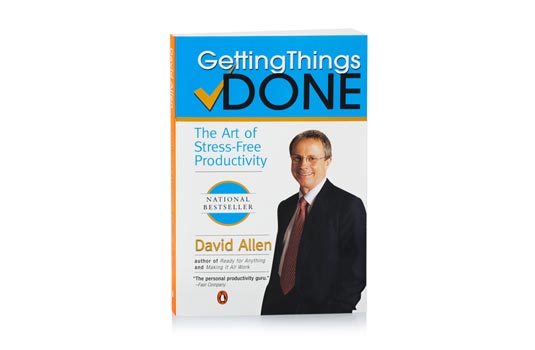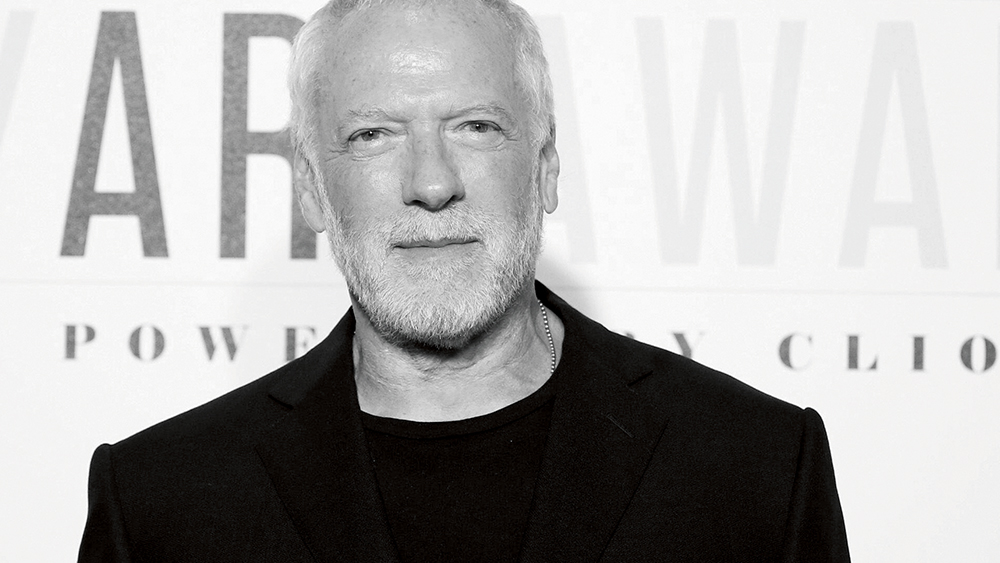The designer's guide to meeting every single deadline
Being organised isn't difficult - you just need a system. Here's one that's easy to put into practice.
As designers, we're always juggling a dozen tasks at once – whether it's dealing with client queries, catching up with bookkeeping or making sure there's going to be work next month. On top of all that, we've got real work to do too. You know, designing things.
If you don't already have a system to track all your responsibilities, you need one. Fortunately, someone's already come up with a task management system that's ideal for creative types. It's called Getting Things Done, or GTD – and we're going to show you how it can reduce your stress levels and give you more time to actually design.
Less stress
Created by business guru David Allen, Getting Things Done is based around a core philosophy. It suggests that stress comes from carrying unfinished business around in your head. Whether it's an appointment you haven't arranged or a phone call you keep putting off, these things distract you during the day and niggle you at night.

Stress is serious. At worst, it can kill you – with 180,000 people in the UK keeling over from stress related illness every year. Before it kills you, it makes you miserable, exhausted and compromises your productivity. Bottom line: reduce your stress and you'll be a better designer.
Enter Getting Things Done. It's a structured method for managing all your unfinished tasks. It gives you a consistent workflow that you can use to record every job and responsibility on your plate and then, get things done.
David Allen wrote his best-selling book on the technique back in 2002 and it's been constantly revised since. We highly recommend it. But even without reading the book, it's easy to grasp the basic principles. Essentially, there's a workflow of five stages: collect, clarify, organise, reflect and, finally, engage. Let's have a closer look at each one:
01. Collect
At this stage you make an exhaustive list of tasks; everything you have to do and everything you want to do. They all go into an 'inbox' or 'bucket'. (Note: this approach excludes some task management tools right from the off, as they require you to enter due dates and categorise items as you add them. In GTD, that happens over the next two stages.)
Daily design news, reviews, how-tos and more, as picked by the editors.
02. Clarify
Starting from the top of your list, you categorise all your tasks by priority. Some you'll be able to do straight away – others will have to wait. Some you'll be able to give a deadline while others may be delegated to someone else. As a designer, some of your tasks will already have specific deadlines for delivery to clients. It's handy to set up your own milestones along the way too, to keep you on track.
03. Organise
Now you put your tasks into lists. The Getting Things Done book suggests sorting things according to 'contexts'. For example, a list named 'emails to send' or 'calls to make'. As a designer, you may have more specific contexts – such as 'send to printer' or 'clients to invoice'.
04. Reflect
Reflection is an important part of the workflow; it means regularly checking your task list to see what needs to be done and adding items that aren't there. The GTD site suggests checking your list once a week – but it in the fast moving world of design, you may wish to start every day with a review and re-prioritisation of your tasks.
05. Engage
All the preparation from stages 01 to 04 was for this: stage 05, doing things. You can work through your task lists, without the background chatter and worry of all the stuff you haven't done, feeling less stressed and more in control.
Planning in practice
Let's say you're starting the week with a series of posters and package designs to deliver, a client meeting to prepare for and a bunch of invoicing to do from the previous week. You also have to chase up a client for a brief that hasn't come through yet and have to get some clarifications on another brief before you start working on it.

The first thing to do is make a global 'to do' list based on all that work – collect it into one place. Next, you clarify which jobs can be done straight away. The client emails fit that category.
You have a fixed deadline to deliver the finished design work, so break that down into smaller milestones and decide which bits you can do straight away and which to schedule for later. You can then assign time for the meeting prep and invoicing.
Keep breaking things down
When you've done that, each task type goes into its own category. GTD talks about contexts (for example, lumping jobs together that you do while you're in a specific place), but you can manage that in whatever way works out logically for you.
Once you start treating all your work like this, your lists will grow as you review them on a daily basis – but you also have the psychological reward of completing tasks.
That's how you apply GTD to design work, hypothetically. You can streamline things even more by using a task management app with the Getting Things Done workflow.
Tools you can trust
We've used a lot of different online task managers over the years and Todoist takes the prize for the most improved service of the bunch. Once heavily reliant on keyboard shortcuts, Todoist now has a fresh and friendly interface that makes applying the basics of GTD easy. The 'collection' bucket in Todoist is the Inbox.
You can quickly add tasks here – with variable levels of detail. You can also set completion dates for those tasks and assign one of four priorities (high, medium, low or none).

You can then organise your Todoist tasks into projects. For example, you can create a generic 'work' project, then divide that into sub-projects: emails, pitching, invoicing and so on.
It's all entirely open and up to you. Each project (or sub-project) can be colour coded. As an extra incentive, Todoist gamifies your productivity, charting your efficiency over time on a chart – as if you needed any more encouragement.
There's an online version with apps for Android and iOS and plugins for Chrome and Gmail. It's free but you can subscribe for the extra functionality of built in notes and tag based filtering. That'll cost you $29 (£18) a year.

Another tool worth a look is My Life Organised (MLO). This one's built for the GTD approach from the ground up. There's no Mac version, but there are versions for iOS, Blackberry, Android, Windows Mobile and Windows. Another black mark is that there's no browser based version, though you can purchase cloud storage as an add on for $14.95 (£11.41) a year.
The basic mobile versions are free – so the cloud subscription is all you have to pay if you use it on iPhone or iPad. Access to some features require you to upgrade to the Pro version of MLO, costing $19.99 (about £12). If you prefer the desktop version it'll cost $49.95 (£30) – but there's also a 45 day trial so you'll have plenty of time to decide whether it's for you.
My Life Organised uses the full range of GTD definitions and jargon. Though the interface is similar to Todoist, it's quite a bit more complex. If you're really into GTD, it will give you all the tools you need to evangelically follow the technique.
More time for design
Ultimately, though, it's not the tools you use but the general change in approach that's important. You can apply GTD basics using the task manager that comes bundled in Microsoft Outlook, a spreadsheet or a big whiteboard mounted over your desk. At David Allen's GTD site you can buy templates and guides that will help you to set up familiar tools like Evernote or use applications built into iOS.
What matters is that GTD gives you a soak-tested, reliable way to organise your time and deadlines. Anything that lets you get on with your core work of designing things has to be good.
What system do you use to organise your work? Let us know in the comments!
Words: Karl Hodge
Karl Hodge is a technology journalist who teaches Digital Journalism at Leeds Met and writes books. Follow him on Twitter @karlhodge.

The Creative Bloq team is made up of a group of art and design enthusiasts, and has changed and evolved since Creative Bloq began back in 2012. The current website team consists of eight full-time members of staff: Editor Georgia Coggan, Deputy Editor Rosie Hilder, Ecommerce Editor Beren Neale, Senior News Editor Daniel Piper, Editor, Digital Art and 3D Ian Dean, Tech Reviews Editor Erlingur Einarsson, Ecommerce Writer Beth Nicholls and Staff Writer Natalie Fear, as well as a roster of freelancers from around the world. The ImagineFX magazine team also pitch in, ensuring that content from leading digital art publication ImagineFX is represented on Creative Bloq.
